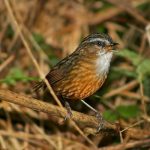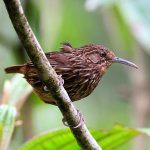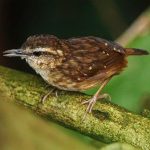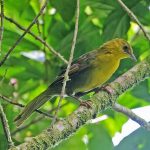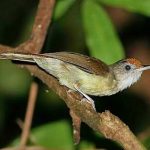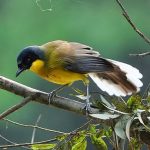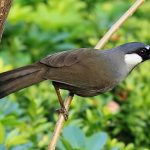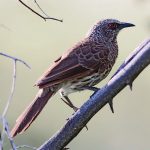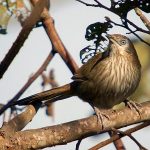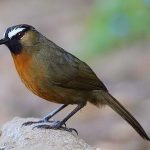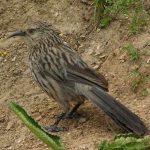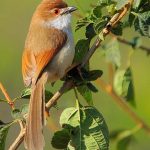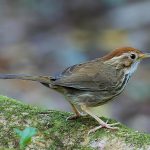Black-chinned babbler

 |
| Photo by Gunjan Arora (Oriental Bird Images) |
Common name:
black-chinned babbler (en); zaragateiro-de-garganta-preta (pt); timalie à bec rouge (fr); timalí barbinegro (es); schwarzkinntimalie (de)
Taxonomy:
Order Passeriformes
Family Timaliidae
Range:
This species is found in the southern slopes of the Himalayas, in northern India, Nepal and marginally into north-eastern Pakistan.
Size:
These tiny babblers are 10-12 cm long and weigh 8-11,5 g.
Habitat:
The black-chinned is mostly found in the understorey of temperate forests, also using moist tropical forests and scrublands. They are restricted to the lower foothills at altitudes of 250-2.750 m.
Diet:
They forage among the foliage, taking insects, spider and other arthropods, including larvae and eggs. They also take small fruits and berries, seeds and occasionally flower, pollen and nectar.
Breeding:
Black-chinned babblers breed in April-June. They nest in a cup or dome made of dry leaves and reeds and lined with pine needles and plant fibres. The nest is usually placed in a low scrub. The female lays 3-4 white eggs with pale red blotches. Both sexes incubate and feed the young, but thre is no information regarding the length of the incubation and fledgling periods.
Conservation:
IUCN status – LC (Least Concern)
This species has a large breeding range and is reported to be fairly common. The population is suspected to be stable in the absence of evidence for any current declines or substantial threats.
